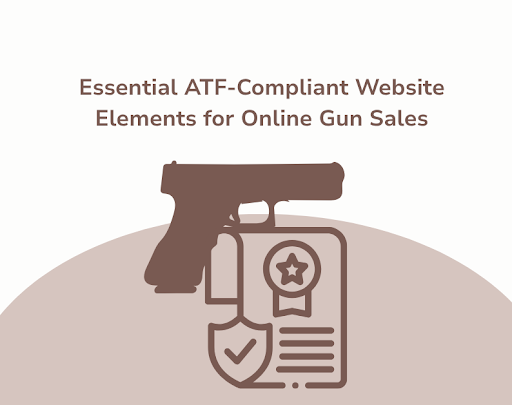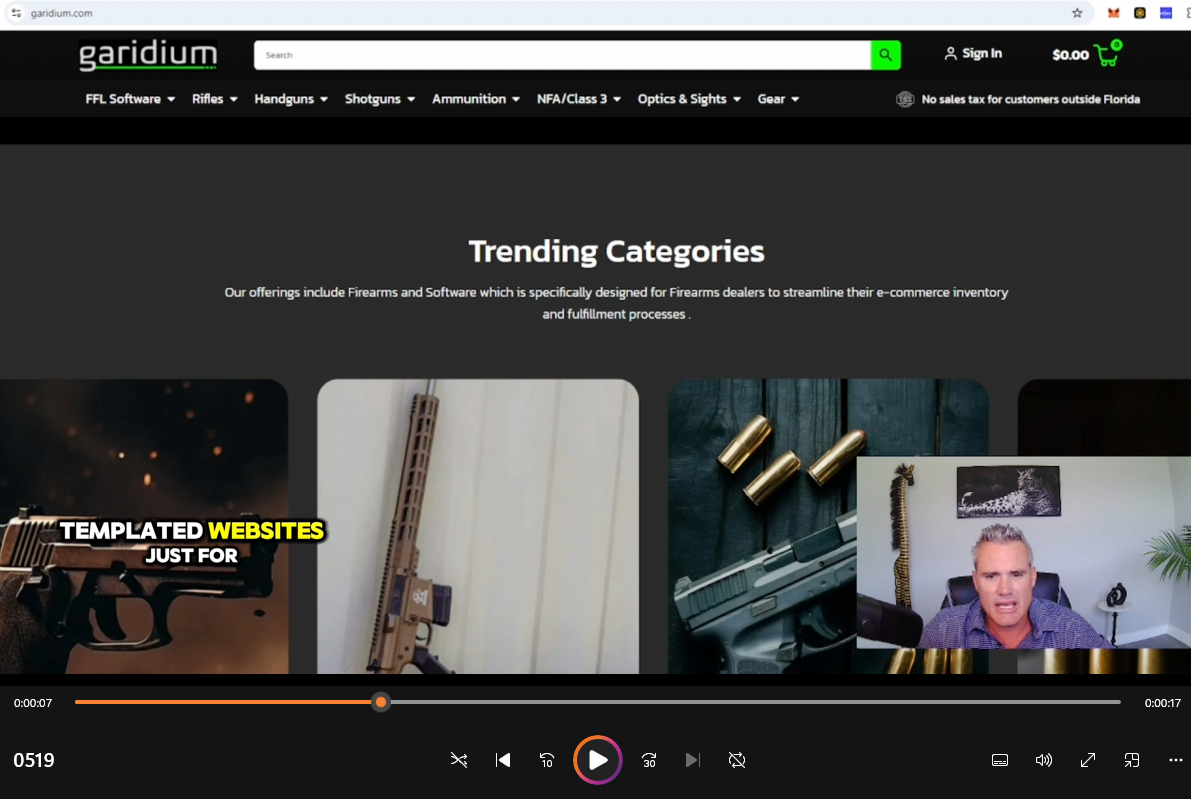
It is increasingly vital than ever to cultivate brand loyalty. Providing outstanding customer service can be crucial for businesses, particularly those in the firearms sector, in building and retaining a devoted clientele. The methods to improve customer service and cultivate brand loyalty will be examined in this article.

Brand loyalty refers to customers’ consistent preference for one brand over others, driven by their positive experiences and satisfaction with the brand’s products and services. Loyal customers are not only more likely to make repeat purchases, but they also become brand advocates, spreading positive word-of-mouth and influencing others.
The Importance of Exceptional Customer Service
Providing outstanding customer service is essential to establishing brand loyalty. Customers are more likely to return and refer friends to the brand when they feel appreciated and well-cared for. Excellent customer service is essential for the following main reasons:
- Trust Building: Consistently positive interactions build trust, encouraging customers to stick with the brand.
- Differentiation: In a crowded market, superior customer service sets a brand apart from competitors.
- Customer Retention: Happy customers are less likely to switch to competitors, reducing churn rates.
- Positive Reputation: Satisfied customers share their experiences, enhancing the brand’s reputation.
Strategies for Exceptional Customer Service

To build brand loyalty, businesses need to implement effective customer service strategies. Here are some proven approaches:
1. Train Your Team
Investing in comprehensive training programs for your customer service team is essential. Employees should be knowledgeable about the products, empathetic, and equipped with problem-solving skills.
Key Training Areas:
- Product Knowledge: Ensure that the team understands the features, benefits, and usage of firearms and related products.
- Communication Skills: Train employees to communicate clearly and effectively, both verbally and in writing.
- Conflict Resolution: Equip the team with strategies to handle difficult situations and resolve conflicts amicably.
2. Personalize the Customer Experience
Personalization is a powerful tool in creating exceptional customer service. Customers appreciate when businesses recognize their individual needs and preferences.
Personalization Techniques:
- Customer Data: Use CRM systems to track customer preferences, purchase history, and interactions.
- Tailored Recommendations: Offer product recommendations based on previous purchases and interests.
- Personalized Communication: Address customers by their names and send personalized messages and offers.
3. Respond Promptly and Efficiently
Timely responses to customer inquiries and issues are crucial. Delayed responses can lead to frustration and a negative perception of the brand.
Best Practices for Timely Responses:
- Set Response Time Goals: Establish clear goals for response times across different communication channels.
- Automate Where Possible: Use automated responses for common queries and ensure human follow-up for more complex issues.
- Monitor Channels: Keep an eye on all customer service channels, including social media, email, and phone, to ensure prompt responses.
4. Gather and Act on Customer Feedback
Listening to your customers and acting on their feedback shows that you value their opinions and are committed to improving their experience.
Ways to Gather Feedback:
- Surveys and Polls: Conduct regular surveys and polls to gather customer insights.
- Social Media Listening: Monitor social media platforms for customer feedback and engage with customers online.
- Direct Feedback: Encourage customers to provide direct feedback through your website or in-store.
5. Create a Seamless Omni-Channel Experience
Customers today interact with brands across multiple channels. Providing a seamless experience across all these touchpoints is essential for exceptional customer service.
Omni-Channel Strategies:
- Integrated Systems: Use integrated CRM and support systems to ensure consistency across channels.
- Unified Communication: Maintain consistent communication and branding across email, social media, phone, and in-store interactions.
- Cross-Channel Support: Allow customers to start a conversation on one channel and continue it on another without losing context.
6. Show Appreciation to Loyal Customers
Recognizing and rewarding loyal customers can strengthen their bond with the brand.
Ways to Show Appreciation:
- Loyalty Programs: Implement loyalty programs that offer rewards, discounts, and exclusive offers.
- Personal Thank You Notes: Send personalized thank you notes or messages to show appreciation.
- Exclusive Events: Invite loyal customers to exclusive events, product launches, or special sales.
Additional Strategies to Enhance Customer Service
While the above strategies form the core of exceptional customer service, there are additional measures you can take to further enhance customer satisfaction and loyalty.
7. Empower Your Employees
Empowering employees to make decisions and solve problems on the spot can significantly improve customer satisfaction. When employees feel trusted and capable, they are more likely to go the extra mile to ensure customer happiness.
Steps to Empower Employees:
- Provide Clear Guidelines: Establish clear guidelines and boundaries within which employees can operate independently.
- Encourage Initiative: Foster a culture where taking initiative and proactive problem-solving are rewarded.
- Offer Continuous Training: Provide ongoing training and development opportunities to keep employees’ skills sharp and up-to-date.
8. Utilize Technology
Leveraging technology can streamline customer service processes and enhance the overall customer experience.
Technological Tools:
- Live Chat: Implement live chat on your website to provide instant support to customers.
- Chatbots: Use AI-powered chatbots to handle common queries and free up human agents for more complex issues.
- Customer Service Platforms: Utilize platforms like Zendesk or Freshdesk to manage and track customer interactions efficiently.
9. Focus on After-Sales Service
After-sales service is crucial for maintaining customer satisfaction and loyalty. Providing support and assistance even after the purchase can leave a lasting positive impression.
After-Sales Strategies:
- Follow-Up Emails: Send follow-up emails to check on the customer’s satisfaction with their purchase.
- Warranty and Repairs: Offer comprehensive warranty and repair services to build trust and reliability.
- Customer Education: Provide resources and tutorials to help customers get the most out of their purchases.
10. Monitor and Analyze Performance
Regularly monitoring and analyzing your customer service performance can help identify areas for improvement and ensure that your strategies are effective.
Performance Metrics:
- Customer Satisfaction Scores (CSAT): Use surveys to gauge customer satisfaction after interactions.
- First Response Time: Measure the average time it takes to respond to customer inquiries.
- Resolution Time: Track the time it takes to resolve customer issues.
- Customer Retention Rates: Monitor the percentage of customers who return to do business with your brand.
Measuring the Impact of Customer Service on Brand Loyalty

To ensure that your customer service strategies are effective, it’s essential to measure their impact on brand loyalty. Here are some key metrics to track:
- Customer Satisfaction (CSAT) Scores CSAT scores measure customers’ satisfaction with a recent interaction or overall experience. Use surveys to collect these scores and identify areas for improvement.
- Net Promoter Score (NPS) NPS gauges the likelihood of customers recommending your brand to others. A high NPS indicates strong brand loyalty and satisfaction.
- Customer Retention Rates Track the percentage of customers who continue to do business with your brand over a specific period. High retention rates signify effective customer service and strong loyalty.
- Customer Lifetime Value (CLV) CLV represents the total value a customer brings to your business over their lifetime. Increasing CLV indicates successful strategies in building long-term relationships.
Conclusion
Building brand loyalty through exceptional customer service is a continuous process that requires dedication and strategic implementation. By training your team, personalizing the customer experience, responding promptly, gathering feedback, creating a seamless omni-channel experience, and showing appreciation to loyal customers, your business can foster strong, lasting relationships. Additionally, empowering employees, utilizing technology, focusing on after-sales service, and monitoring performance can further enhance your customer service efforts. Remember, loyal customers are not only repeat buyers but also brand advocates who can significantly contribute to your business’s growth and success.


